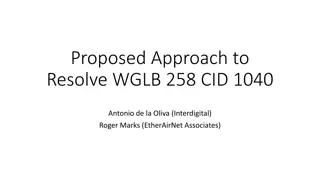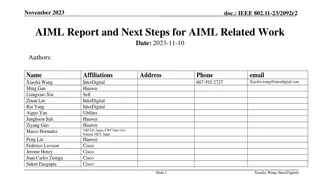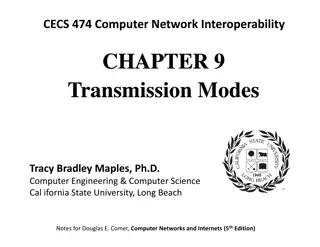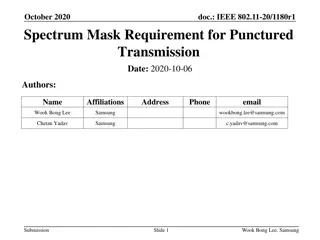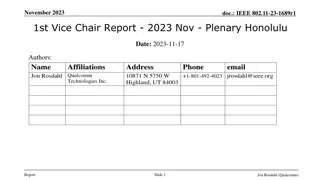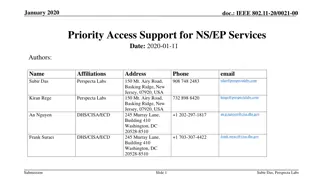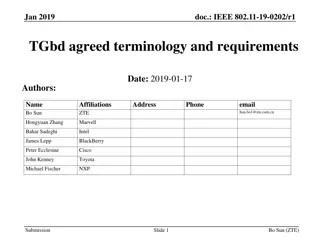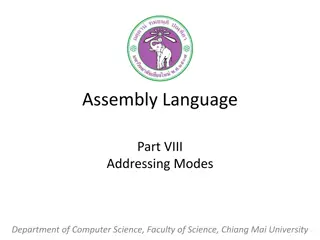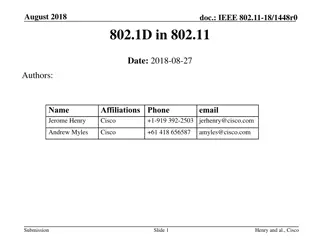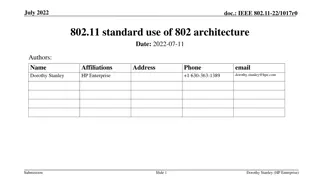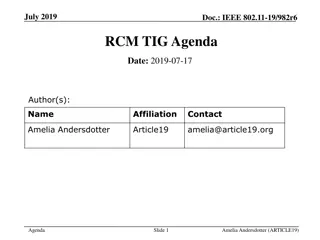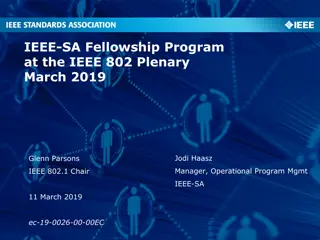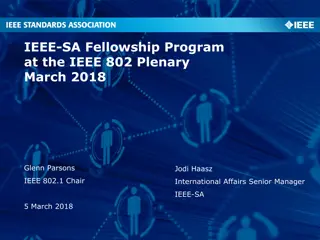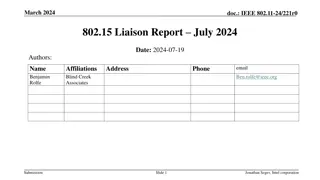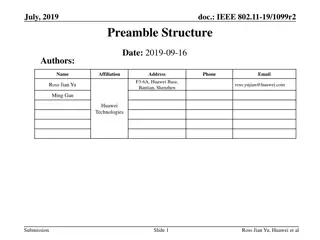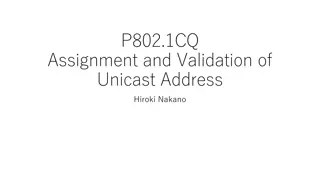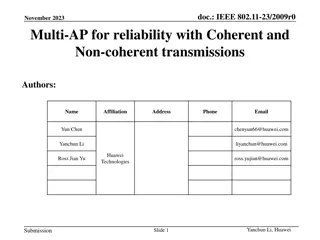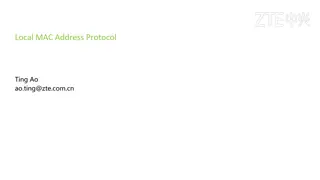Recap of IEEE 802.11-24/1200r1 - July 2024 Transmission Modes
This contribution discusses the harmonized waveform design and various transmission modes for active UL transmission in IEEE 802.11-24/1200r1 document. It presents multiple proposed solutions, waveform types, feasibility, and benefits of active UL transmission. The aim is to achieve optimal design considering different scenarios and requirements while emphasizing the need for harmonization in PHY and MAC designs.
Download Presentation

Please find below an Image/Link to download the presentation.
The content on the website is provided AS IS for your information and personal use only. It may not be sold, licensed, or shared on other websites without obtaining consent from the author.If you encounter any issues during the download, it is possible that the publisher has removed the file from their server.
You are allowed to download the files provided on this website for personal or commercial use, subject to the condition that they are used lawfully. All files are the property of their respective owners.
The content on the website is provided AS IS for your information and personal use only. It may not be sold, licensed, or shared on other websites without obtaining consent from the author.
E N D
Presentation Transcript
July 2024 Doc.: IEEE 802.11-24/1200r1 Follow Up on Transmission Modes Date: 2024-07-18 Authors: Name Affiliation Address Phone Email Yinan Qi v-qiyinan@oppo.com Weijie Xu Chuanfeng He Ke Wang OPPO Submission Slide 1 Yinan Qi (OPPO)
Doc.: IEEE 802.11-24/1200r1 July 2024 Abstract In this contribution, we recap the harmonized waveform design and transmission modes discussed so far for different scenarios of AMP and discuss the feasibility and benefits of active UL transmission. Submission Slide 2 Yinan Qi (OPPO)
July 2024 Doc.: IEEE 802.11-24/1200r1 Recap: Multiple Solutions [1] Four solutions have been proposed and discussed so far Solution 1: active transmission; Solution 2: close range backscatter with full duplex; Solution 3: long range backscatter with bi-static; Solution 4: legacy 802.11 devices enhanced with AMP features, e.g., extremely low power consumption, energy harvesting capability, etc. Clearly, harmonization is needed Different solutions may diverge vastly in PHY and MAC design. Harmonization needs to start from basic design, e.g., waveform. Objective: optimal design for all solutions but may not be optimal design for each individual solution, thus compromise needed Submission Slide 3 Yinan Qi (OPPO)
July 2024 Doc.: IEEE 802.11-24/1200r1 Recap: Waveform Types [1] Different waveforms have been proposed and discussed so far as in the below table DL comm. MC-OOK (AP) UL data OOK/PSK/ FSK/DSSS (AMP) OOK (AMP) OOK/PSK/ FSK/DSSS (AMP) WPT TBD (energizer) CW S1: Active S2: Backscatter (close range) S3: Backscatter (long range) TBD (AP/M) MC-OOK (AP) Pulse/OFDM (AP/M) TBD (energizer) Pulse/OFD M (AP/M) TBD (assistant node) S4: Legacy enhanced MC-OOK (AP) TBD (energizer) Submission Slide 4 Yinan Qi (OPPO)
July 2024 Doc.: IEEE 802.11-24/1200r1 Solution 1: Active UL Tx Feasibility of active UL Tx During TIG many contributions [2] have shown that low complexity, low cost and low power consumption can be achieved Multiple prototypes with already shown in the past meetings Benefits of active UL Tx Simple design with legacy protocols as a starting point No significant changes in PHY design, thus simple implementation within existing and new products and limited specification efforts are expected Technical requirements for active UL Tx Extremely low complexity and power consumption no crystal, higher clock offset, e.g., 1000ppm [3] Depending on harvested energy less than 1 mW power consumption [2] Submission Slide 5 Yinan Qi (OPPO)
July 2024 Doc.: IEEE 802.11-24/1200r1 Summary In this submission, the harmonization of waveform issues is recapped and feasibility and benefits of active UL Tx are presented. Submission Slide 6 Yinan Qi (OPPO)
July 2024 Doc.: IEEE 802.11-24/1200r1 Reference [1] 11-24/0849, Harmonization of Waveform. [2] 11-23/2203, Technical Report on support of AMP IoT devices in WLAN. [3] 11-23/1140, Considerations for AMP Devices Submission Slide 7 Yinan Qi (OPPO)
July 2024 Doc.: IEEE 802.11-24/1200r1 SP Do you agree that 11bp defines at least one mode of MAC/PHY that allows an AMP device with active uplink communication in 2.4GHz with the following technical requirements? Maximum clock offset of 1000ppm Submission Slide 8 Yinan Qi (OPPO)







